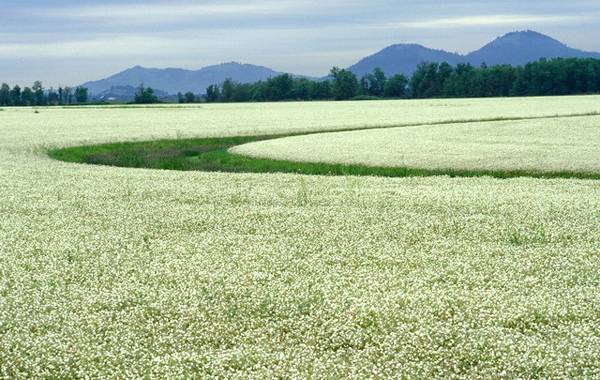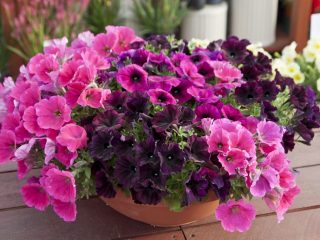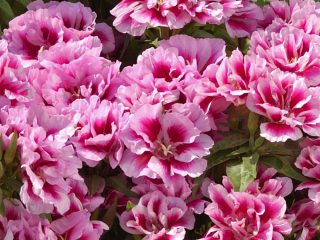Content
Many summer residents and gardeners would really like to have some super unpretentious small flowers on their plot, which, if possible, could be sown directly in the ground in the spring, so as not to bother with growing seedlings, and then transporting them to their future permanent habitat . And if these flowers also had an attractive aroma, then they would not have a price. But such flowers exist and they look very attractive, although for some unknown reasons they are still little known to Russian summer residents and flower lovers. This is limnanthes, which even a beginner in floriculture can easily cope with growing from seeds.
Limnantes has a very original flower color, which cannot fail to attract attention - a bright yellow lemon center with a small white edge. It is thanks to this coloring that it received its popular name in the British Isles - fried egg. Despite such an appetite-stimulating culinary name, the flower itself and all its parts are inedible. But from the seeds of one of the varieties of limnanthes, a vegetable oil that is unique in its composition is obtained, which can cope with many cosmetic problems and even have a healing effect on the human body.
In May, the coastal valleys of the Pacific Northwest coast of the United States are covered with white airy foam.
This is what the flowering of one of the most valuable representatives of the Limnanthus family for the cosmetic industry looks like - Limnanthus alba, or Limnanthus alba.
It was for the abundance of flowering that the Americans nicknamed these flowers “meadow foam.” In Russia, limnanthes is often called simply foam.
Description
The genus Limnanthes belongs to the family of the same name and consists of only 8 species of annual plants. Two Greek words - "limna" - swamp and "anthos" - flower - served to form the name of this genus. Indeed, in natural conditions, limnantes can often be found in mountain lowland valleys and wetlands, which are flooded in winter and dry out in summer. But, given that the flower is an annual, the entire main growing season of Limnanthes occurs during the relatively dry season. And in humid conditions, only its seeds overwinter. This fact must be taken into account, since, as it turned out later, in garden conditions, limnanthes does not like to grow in a swamp and can only withstand short-term flooding.
In garden culture, only one species is known and popular - Douglas limnanthes.
Limnanthes Douglas is an annual herbaceous plant reaching a height of no more than 20-30 cm.The stems can grow straight, but they can also lie down and branch strongly in different directions. The bush can grow so large that one plant will take up to 40-45 cm of space in diameter. Therefore, Limnanthes is ideal as a ground cover flowering annual, capable of forming elegant carpets of flowers. The leaves are very elegant and attractive in themselves - they have a pale green color, lacy pinnately dissected.
The peduncles tend upward and bear cheerful, medium-sized flowers (about 3 cm in diameter), consisting of five petals. Despite the small size of Limnanthes flowers, there can be so many of them that they often completely hide all the foliage behind them. The flowers have a very attractive sweetish aroma, so bees and butterflies often circle around them.
Limnanthes flowering in favorable conditions can be very long - from June until frost. The flower is very unpretentious and can withstand light frosts down to -2°-3°C.
Limnanthes seeds ripen by the end of summer and are enclosed in fruits - nuts with 4-5 almost spherical blades, which can be either smooth or tuberculate. The seeds themselves are quite small in size; one gram contains up to 150 pieces. They are shaped a bit like apple seeds. Germination is good and lasts for three years.
Despite the fact that in gardens it is the two-color color of flowers that is most often found, there are several varieties of Limnanthes Douglas with plain white, yellow and pinkish flowers.
Rarely, the flowers also have a streaked speckled color.
Growing from seeds
The seed method of propagation is the main one in Limnanthes, as well as in most annuals.It is best to sow the seeds immediately in a permanent place in flower beds or in street flowerpots. Seedlings can survive light frosts if they are covered with non-woven materials.
Typically, such conditions develop in mid-latitudes around the middle to second half of May.
Sowing seeds in the ground
In outdoor conditions, Limnanthes seeds are sown to a depth of about 2 cm, in nests of 2-3 seeds, since seed germination is not one hundred percent. To get a continuous carpet of flowers, the plants must grow at a distance of 10-20 cm from each other. But under conditions favorable for growth, one Limnanthes plant can, in principle, fill a small street flowerpot measuring 40x40 cm.
After planting, it is important to keep the soil moist at all times. Shoots usually do not take long to appear - they appear in 6-15 days, depending on temperature conditions. Limnanthes blooms, as a rule, 1.5-2 months after emergence.
Limnanthes usually easily renews itself by self-sowing, so by planting it on your site just once, you can grow this flower as a permanent inhabitant of your garden. In addition, its seeds can be sown before winter, unless there are frequent and prolonged winter thaws in your area.
If you want to enjoy the flowering of limnanthes at an earlier date, then you need to sow it for seedlings in March or April. If you sow Limnanthes seeds in March, then in May you can plant seedlings with buds in the ground.
Growing using seedlings
Most often, seedlings are grown in a greenhouse or greenhouse - in these conditions of plenty of light and low temperatures, they turn out stronger and healthier, but you can try to grow limnanthes from seeds at home. The plant does not take transplantation very well - it can get sick for several weeks and come to its senses after picking - so it is better to sow the seeds immediately in separate pots. In order to plant them directly in flower beds in May using the transshipment method, minimally disturbing the root system of the limnanthes.
When using them, you just need to separate the walls of the cup and place the earthen ball, braided with roots, ready for planting, in a hole in the soil.
So, to sow Limnanthes for seedlings at home, you need to prepare:
- A certain number of homemade cups without a bottom according to the number of limnanthes seeds prepared for planting. Just like in a flowerbed, you can sow 2-3 seeds in one cup at once.
- A deep tray of such a size that it can accommodate all the prepared cups.
- Light permeable soil.
- The limnates seeds themselves.
- An aqueous solution of any growth stimulator (Epin, Zircon, Humates, Energen, HB-101 and others) is desirable, but not necessary. You can use regular water at room temperature.
Carefully fill the cups with soil and lightly compact the top. At home, it is enough to deepen limnanthes seeds into the soil to a depth of 0.7-1.0 mm.If you are not ready to constantly monitor the humidity in the cups during the germination process and regularly add water, then it is better to secure a large plastic bag on top of the tray. Place all this anywhere in the room, since the seeds do not need light before germination, and regular room temperature will be more than enough.
At home, seedlings can appear faster - in 5-7 days. Try not to miss this moment and immediately place the tray with cups on the lightest windowsill so that the sprouts do not have time to stretch out. In the future, caring for limnanthes seedlings consists only of regularly keeping the soil moist. It is advisable to place the seedlings in the coolest and at the same time brightest place in the house.
Gradually accustom the seedlings to outdoor conditions, taking them to the balcony or outside throughout the day, if possible. And already in May you can plant limnanthes plants in a permanent place.
If you want Limnanthes to bloom earlier, but there is no desire or opportunity to tinker with seedlings, you can try sowing the seeds in open ground in April, stretching several layers of lutrasil or spunbond on top. Even after the emergence of seedlings, it is not necessary to remove the covering material; you can water directly through it until consistently warm weather sets in outside.
Features of care
Limnanthes is a completely undemanding plant. It will grow well in almost any conditions that are usually provided to annuals.Of course, the most abundant and bright flowering can be expected from it only in sunny places. It is better not to plant limnanthes in partial shade, because although it will survive there, the flowering will disappoint you, and the stems will stretch out and look untidy.
The big advantage of this flower is that it adapts well to any type of soil: from slightly acidic to slightly alkaline, from sandy to heavy loam.
The only thing it needs is regular and sufficient watering. Despite its name, limnanthes does not like stagnant water at the roots, but it tolerates dry conditions even worse - it may stop blooming and developing. In the middle zone with heavy rains, it is unlikely to be in danger of drying out the roots, but in the southern regions it is necessary to pay special attention to this. It is better, if possible, to immediately mulch the root zone of the limnanthes with any organic material: straw, sawdust, mown grass.
In order for Limnanthes to continue blooming until autumn, faded flowers must be removed and the shoots themselves must be regularly pinched. During the same period, it would be useful to fertilize the limnanthes with complex fertilizer.
Or you can do it another way. In June, sow the Limnanthes seeds again. In this case, the peak of flowering will occur at the end of summer - beginning of autumn, and you will be able to admire the rich, optimistic colors of this flower until the very first frost.
Limnantes will perfectly decorate alpine hills and rocky gardens with artificial ponds. In flower beds it can go well with its fellow countrymen: nemophila and eschscholzia.It is also suitable as an hanging plant, for planting in flowerpots and for decorating balconies and loggias.
Get to know this lovely flower better and, most likely, it will charm you and settle in your garden for a long time.





















